 501.
Yasukuni Enoki,
Former Ambassador of Japan in India categorically echoes the Hindu influence in
Japan, where
80% of
Japanese gods are originally from India. This stands as a monument to the
vitality and magnetism of Hinduism and Indias position in ancient world.
501.
Yasukuni Enoki,
Former Ambassador of Japan in India categorically echoes the Hindu influence in
Japan, where
80% of
Japanese gods are originally from India. This stands as a monument to the
vitality and magnetism of Hinduism and Indias position in ancient world.
Enoki has noted:
It is very important for the Japanese to know that in the bottom of Japanese
culture, Indian culture is very firmly imprinted.
He also mentions that:
As I come from the Japanese
Lakshmi
Town,
it is no great surprise to find that Japanese life is full of so many Hindu
deities. Since these Hindu deities were introduced into Japan through China,
with Chinese names, Japanese people are unaware of their origins.
Hindu and Buddhist deities of India are worshiped by the people of Japan. The
5th century Sanskrit script is revered in Japan and its letters denoting
different deities, are considered sacred by the Japanese. They pray in Sanskrit.
The Vedic havan is known as Goma in Japan. There are hundreds of shrines to
Goddess Saraswati
and
innumerable representations of
Lakshmi, Indra, Shiva, Brahma, Mahakala, Ganesha, Agni, Bhudevi, Garuda,
Kamadeva,Yama,
and other deities.
In fact, deities that have practically been forgotten in India, such as Vayu
and Varuna, are still worshipped in Japan. The most ancient temple to
Lord Ganesha which has been in use for more than a thousand years is located in
Tokyo.
In a sense Japan is a time capsule of Hindu culture that is already disappeared
in India.
(source:
Indian Deities Worshipped in
Japan
and
Hindu deities in Japan
by Benoy K Behl).
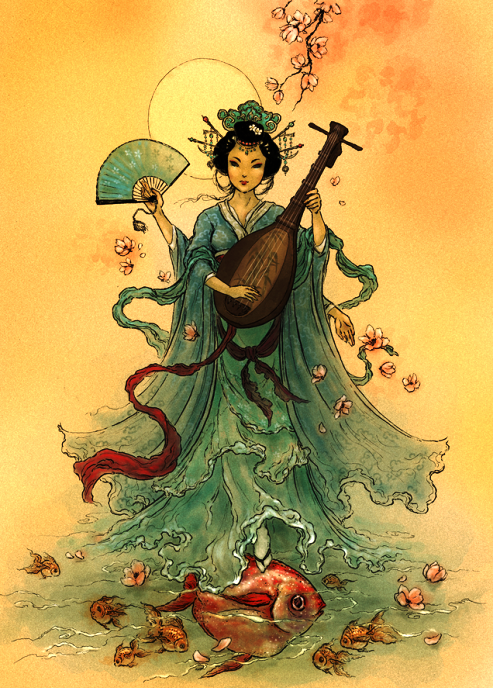
Goddess Benzaiten - A Japanese Saraswati
***
 502.
Tulsi Gabbard (1981 - )
is an American politician and member of the Democratic
Party who
has been the United
States Representative for Hawaii's
second congressional district since
2013. She is also a Vice-Chair of the Democratic National Committee. Elected
in 2012, she is the first American Samoan and
the first Hindu member
of the United States Congress.
502.
Tulsi Gabbard (1981 - )
is an American politician and member of the Democratic
Party who
has been the United
States Representative for Hawaii's
second congressional district since
2013. She is also a Vice-Chair of the Democratic National Committee. Elected
in 2012, she is the first American Samoan and
the first Hindu member
of the United States Congress.
The Bhagwad Gita is the "perfect
textbook" for those who are striving to be "servant leaders" and its message is
relevant for all days and ages, American Congresswoman Tulsi Gabbard said.
The teachings by Lord Krishna in Bhagwad Gita are life and soul for me. They
are the absolute foundation and motivation for the actions and the work and
everything that I am trying to do with my life," she said during a discussion on
'The Future of Indo-US Relationships' organised by the India Foundation.
Noting
that the level of "optimism" for the future of Indo -US ties is very high at the
present juncture and there were many areas of collaboration, Gabbard -- a member
of the US
House of Representatives -- said that these ventures can be successful by
upholding and living the ideals of Lord Krishna as taught in the Gita.
"We have many areas of opportunity and many areas that we can collaborate. The
only way we can be successful in these ventures and in every other part of our
lives is by doing our very best to uphold and live by these ideals like Krishna
teaches us in Gita... of taking actions for service of others. "It's not just
the political leaders who are charged with this responsibility but each of us
with our own lives," she said. Gabbard, who took her oath as a US Congresswoman
on the Bhagwad Gita, said that the text would remain relevant regardless of time
and age.
"That's what I found through my own
personal experience -- that the Gita is the perfect text for people who are
striving to be servant leaders. This textbook is applicable to everyone. "(It)
is as relevant today as it has always been and as it always will be...
regardless of your age, where you come from, what language you speak, what
gender..." she said. Noting her personal experience practising 'Karm and Bhakti
Yoga', Gabbard said she had gradually understood her "true identity" through it.
"I have gradually been able to understand my true identity ... Who I really am,
my spiritual essence, my purpose in life..." she said. Talking about her days in
Iraq, where she had volunteered with the US military, Gabbard said that during
that time, she would handle the stress of duty by turning to the Gita.
(source: Bhagwad Gita 'perfect textbook' for leaders: US Congresswoman Tulsi Gabbard
- dnaindia.com).
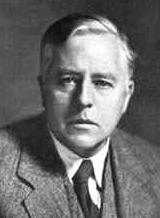 503. Henry
Margenau (1901 - 1997)
Born in Bielefeld,
Germany, Margenau obtained his bachelor's
degree from Midland
Lutheran College, Nebraska before
his M.Sc. from
the University of Nebraska in
1926, and PhD from Yale
University in
1929. This
German-US noted philosopher physicist, wrote:
503. Henry
Margenau (1901 - 1997)
Born in Bielefeld,
Germany, Margenau obtained his bachelor's
degree from Midland
Lutheran College, Nebraska before
his M.Sc. from
the University of Nebraska in
1926, and PhD from Yale
University in
1929. This
German-US noted philosopher physicist, wrote:
Did you know that atomic theory was
anticipated by Hindu philosopher Kanada around 500 BCE?
But the most remarkable feature
which I have never seen in American textbooks on the history of science is the
atomic theory of philosopher Kanada.
Source:
Physics and Philosophy - by Henry Margenau p. 30 - 38 1978).
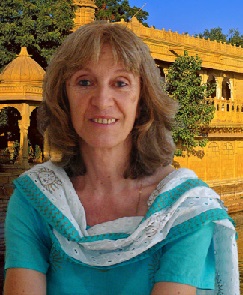 504.
Maria Wirth ( )
is a German and who came to India on a stop over (thats at least what she thought)
on her way to Australia after finishing her psychology studies at Hamburg
University. She visited the Ardha Kumbha Mela in Haridwar in April 1980 where
she met Sri Anandamayi Ma and Devaraha Baba, two renowned saints. With their
blessing she continued to live in India and never went to Australia.
504.
Maria Wirth ( )
is a German and who came to India on a stop over (thats at least what she thought)
on her way to Australia after finishing her psychology studies at Hamburg
University. She visited the Ardha Kumbha Mela in Haridwar in April 1980 where
she met Sri Anandamayi Ma and Devaraha Baba, two renowned saints. With their
blessing she continued to live in India and never went to Australia.
She dived
into Indias spiritual tradition, sharing her insights with German readers
through articles and books. For long, she was convinced that every Indian knows
and treasures his great heritage. However, when in recent years, she noticed
that there seemed to be a concerted effort to prevent even Indians (and the
world) from knowing how valuable this ancient Indian heritage is, she started to
point out the unique value of Indian tradition also in English language.
She writes eloquently thus:
Secular means worldly in contrast to sacred or religious, and secularism is a
western concept. State and religion were intertwined since Christianity became
state religion in the Roman Empire. The Church declared what is the truth, for
example that that Jesus is the only way or that the earth is flat, and everyone
had to agree. If scientists disagreed, they were in serious trouble. Not without
reason those centuries of Church domination are called dark ages and the
liberation from her tight embrace is called the era of Enlightenment. For
Christian Europe, it was a great and hard fought achievement to get secular states, where the Church could not push anymore her agenda through state laws.
Several centuries ago, even the Sunday mass was obligatory in German kingdoms.
Nobody was allowed to leave Christianity. The blasphemy laws kept the flock in
check. Heresy was punished severely. Jews suffered discrimination and
persecution all through history being branded as the killers of Jesus.
After Martin Luther split the Church into Protestants and Catholics, fierce wars
were fought over supremacy which destroyed much of central Europe. In 1648,
after 30 years of fighting, a compromise was found: the subjects of a region had
to follow the religion of their ruler. Only in 1847, a Prussian king introduced
a law for negative religious freedom, which meant, his subjects had the right
to leave the Catholic or Protestant Church. Ever since, the Churches are losing
sheep from their flock. It points to the fact that Christianity did not grow
because its dogmas were convincing. It gained strength because those born in the
faith could not leave it. The blasphemy laws propped up Christianity.
India has a completely different story. Sanatana Dharma was never based on
unreasonable dogmas and did not need state oppression to keep believers in
check. It was not in opposition to science. It was helpful to society as a whole
by giving guidelines for an ideal life that acknowledges the invisible,
conscious essence in the visible universe. It did not straight jacket people
into an unbelievable belief system. It allowed freedom of thought and many
parallel streams with different ways to connect to this essence emerged.
Hinduism is a way of life, is often said. Following Hindu Dharma is actually
an ideal way
of life.
(source:
Is Hindu Dharma good and Hindutva bad? - by Maria Wirth).
Hindus
cannot be put into one single box. There are too many different ways to reach
the goal of life. As it were, there are many minorities within Hinduism. But
they all are based on the Vedic insight that everything, including our persons,
is permeated by the same divine essence which is called by many names but is
ultimately ONE. Our human consciousness (Atman) is one with the cosmic
consciousness (Brahman) and to realize this, is the goal and fulfillment of
life. Satyam vada, Dharmam chara the Veda exhorts speak the truth and do
what is right under the given circumstances. And find out who you really are:
you are not a separate entity but in the depths of your being one with all.
From
this follows that good Hindus are those rare human beings whose dharma makes
them regard all others as brothers and sisters. Their dharma makes them further
respect nature and not harm unnecessarily any living being.
Hindus
do not, unlike Christians and Muslims, divide humanity into those who are chosen
by God and those who are eternally damned. Hindu children are not taught to look
down on those who are not Hindus, unlike children of the dogmatic religions who
are taught that their God does not love those others unless they join their
true religions.
Hindus
are also comparatively kinder to animals. The great bulk of vegetarians
worldwide are Hindus.
Hindus
never fought crusades or jihads to establish their dharma in foreign lands. In
fact, they didnt need to, because they convinced most of Asia merely by solid
arguments. Yet, for the past thousand years Hindus were at the receiving end of
jihads and conversion campaigns and millions of Hindus were killed in cold blood
because they were Hindus. It has to be held in favour of Hindus that they held
on to their tradition and did not succumb to the pressure and even violence
brought on them to adopt blind belief that only one particular person has
revealed the full truth. Instead, they continued trusting their sages who never
asked for blind belief, but asked to verify their insights through experience.
(source:
Why the notion of ‘Hindu Nation’ alone is chosen for criticism? - by Maria
Wirth).

Thanjavur Brihadeeswarar Temple entrance.
(image source:
Surya's Tapestry: Ancient Rishis Pathway to
Hinduism- By Sushama Londhe).
***
Since I grew up in the Catholic Church and know the narrow mindedness that is
indoctrinated into children, I wonder why on earth Indians would prefer dogmatic
religions to their ancient, benign Dharma.
Is it not time that Indians wake up to the treasure hidden in their scriptures
which are much older than what western scholars estimated? Those scholars were
influenced by the Christian belief that the world was created only some 6000
years back. The Rishis had always thought big and their estimate of the age of
(this) universe is collaborated by astronomy. Further, their claim the world is maya was ridiculed, but nowadays nobody ridicules it unless he wants to make a
fool of himself.
The greatest treasure of Indias wisdom, however, lies in the knowledge of what
the human being truly is: he is not a separate person, the Vedas claim. He is
one with Brahman. His essence is pure, infinite consciousness. And it is
possible to realize this truth by living a dharmic life and doing sadhana. When
the mind is stilled by dropping thoughts, the divine dimension of ones being is
accessed. True inspiration and intuition come from this level, and true
happiness as well.
And how to drop thoughts? In the Vijnanabhairava, one of the texts of Kashmir
Shaivism, 112 methods are described. Maybe they are already patented in the west
and come to India in the form of seminars held by foreigners charging hefty
fees? The participants from the wealthy elite would not notice. However, in
spite of the lack of traditional knowledge in the English educated classes,
Indian tradition is fortunately still alive among many who dont speak English.
They make India still positively stand out among other countries, in spite of
the vigorous attempts by media to blacken her image.
(source:
mariawirth
blog).
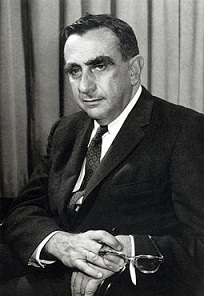 505. Edward
Teller (1908 - 2003)
was a Hungarian-born
American
theoretical physicist
who, although he claimed he did not care for the title, is
known colloquially as "the father of the hydrogen
bomb.
505. Edward
Teller (1908 - 2003)
was a Hungarian-born
American
theoretical physicist
who, although he claimed he did not care for the title, is
known colloquially as "the father of the hydrogen
bomb.
Lawrence Livermore National Laboratory, which Edward Teller help found, has
something in common with CERN's LHC. Both laboratories have a statue of the
Hindu god Shiva,
which depicts this God performing a dance called the
Nataraja
to destroy a weary universe in preparation to restart creation.
Teller explained nuclear fusion in
the following words:
Laser lights is brought in
simultaneously from ten pipes on the top and ten pipes on the bottom.
Compression and nuclear reaction occurs in a tiny dot at the middle of the
sphere. Apparatus practically filling a whole building feeds the twenty pipes,
or the arms of the god Shiva. According to Hindu Creed, Shiva had three eyes;
two for seeing, and one (usually kept closed) to emit annihilating radiation.
The Hindus obviously know about lasers.
(source:
Energy from Heaven and Earth by Edward Teller p. 216 W H
Freeman and Company. San Francisco 1979).
506.
Makarand R. Paranjape
is a professor at Jawaharlal Nehru University in the School of Language,
Literature and Culture Studies. He has authored and edited over 30 books,
including Spirituality and
the Modernisation of India and Altered
Destinations: Self, Society, and Nation in India. He
is also managing trustee of the Samvad India Foundation, a nonprofit that
promotes intercultural dialogue.
He
has written on
Hindu Ecology thus:
From the most ancient of times, Hindus have
shown immense reverence for all forms of life. Forests, for instance, were
especially sacred. The most important Hindu scriptures, the Vedas, have large
sections designated as the Aranyakas, or the forest books. The Upanishads, which
embody the quintessence of Hindu thought and philosophy, form a part of these
forest books. Here is an example of one of the celebrated declarations from one
of these texts, the Bhumi Suktam, Atharva Veda:
Earth, in which the seas, the rivers and many waters lie, from which arise foods
and fields of grain, abode to all that breathes and moves, may She confer on us
Her finest yield.
 It is generally believed that the founders of
Hindu society were not kings or conquerors, but sages and mystics. These latter,
known as the Rshis, generally dwelled in forests. The Rshis were able to
perceive the interdependence of all inanimate and animate objects, which they
called Rta, or the great cosmic order. To live in harmony with Rta was
considered the greatest good and happiness, but to go against it would result in
disharmony and misery.
It is generally believed that the founders of
Hindu society were not kings or conquerors, but sages and mystics. These latter,
known as the Rshis, generally dwelled in forests. The Rshis were able to
perceive the interdependence of all inanimate and animate objects, which they
called Rta, or the great cosmic order. To live in harmony with Rta was
considered the greatest good and happiness, but to go against it would result in
disharmony and misery.
To the hermitages of these Rshis, who were the
preceptors of humankind, came emperors and their progeny, as well as commoners
and peasants. Together they learned the cardinal truths of life, chiefly dharma
or righteousness, which was thought to be the basis of both natural and cosmic
order. What Rta was to the cosmos, dharma was to the world of human beings.
The forests in ancient times were not only a source of prosperity but also sites
of penance, asceticism and spiritual contemplation. It was as if two orders or
ways of life were clearly established, one leading to worldly prosperity, power
and pleasure (Kamaand Artha),
and the other conducive to virtue, enlightenment and liberation (Dharma andMoksha).
Clearly, these were not thought of as separate or necessarily antithetical, but
together formed the matrix of the good life on Earth.
But the basis of both paths was a respect for and recognition of interdependence
between human beings and the natural world.
This interdependence is articulated in a famous verse of the
Bhagavad Gita,
one of the favorite sacred texts of Hindus:
From food come forth living beings, and from rain food is produced; from
sacrifice arises rain, and sacrifice is born of action.
We clearly see here a cycle of mutuality and reciprocity between action,
sacrifice, rain and food; that is, between the human, the natural and the
supernatural realms.
(source:
Hindu Ecology - By Makarand R Paranjape).
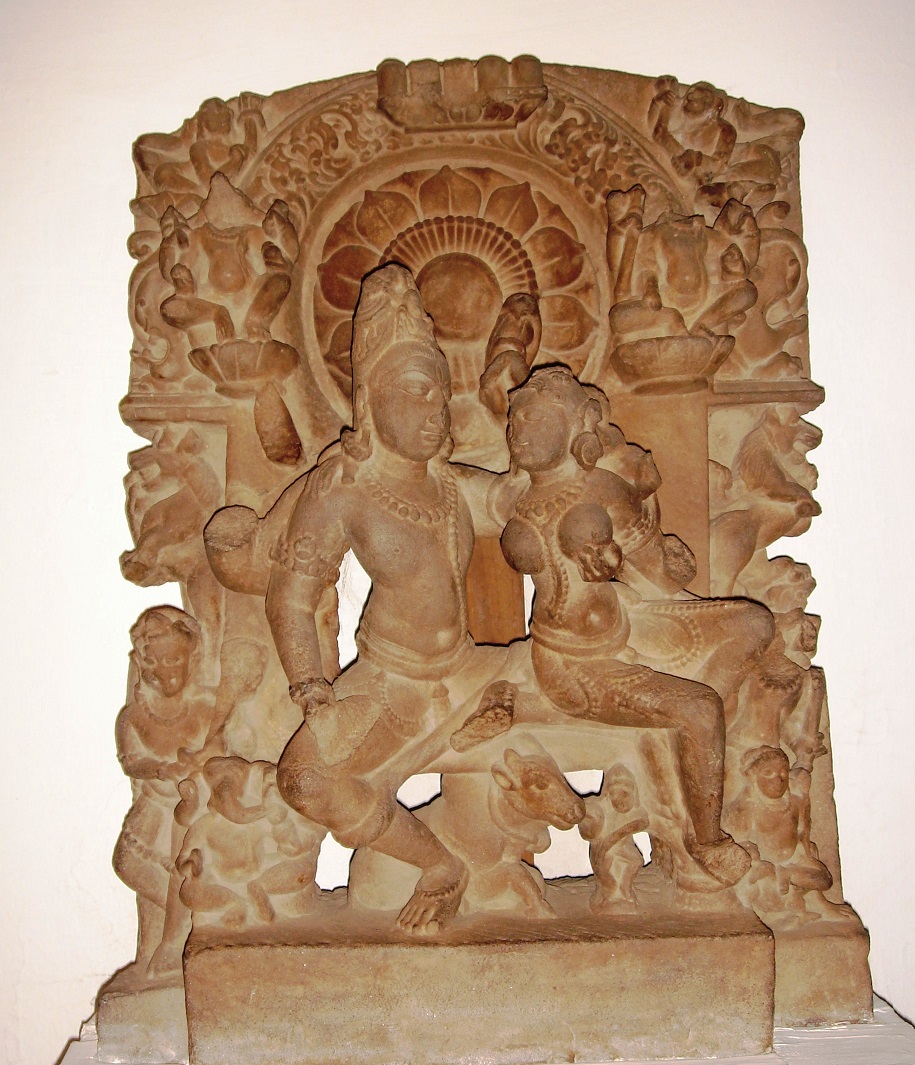
Uma
Maheshwara, 9th century
(image source: webmaster's
own collection of photos).
***
 507.
Jacob Needleman
(1934 - ) American philosopher, author and religious scholar,
author of the book
A Sense of the Cosmos has written:
507.
Jacob Needleman
(1934 - ) American philosopher, author and religious scholar,
author of the book
A Sense of the Cosmos has written:
In the great spiritual disciplines of the world, the path of self-knowledge is
precisely the study of time, energy and causality in oneself. For example, the
ancient Hindu tradition of Sankhya speaks of the evolution and degeneration of
energies in the cosmos, the expansion and contraction of time, the subtle or
coarse qualities of the substances that enter into the physical and psychic
functions of the organism – all of which need to be observed in oneself.
Writing on the topic of
Nucleus and Radiation, he has observed that:
A symbolic understanding of nature might be understood from India. A selection
from the writings of a contemporary master of the
ancient system of Samkhya:
If you consciously hold within yourself three quarters of your power and use
only one quarter to respond to any communication coming from others, you can
stop the automatic, immediate and thoughtless movement outwards, which leaves
you with a feeling of emptiness, and of having consumed by life. This stopping
of the movement outwards is not self-defense, but rather an effort to have the
response come from within, from the deepest part of ones being. This process
reverses the natural movement of prakriti (Great Nature) and brings back energy
to its seed form. Let this become your way of communicating with others.
Writing on the
topic of Creation and Destruction he has observed:
Many speculative
philosophers have written about the idea, contained in many traditions, that in
the universe there is a law of creation and a law of destruction, a law of love
and a law of death. We find it clearly stated in Hinduism where these two forces
are symbolized by the gods Brahma and Vishnu.
(source:
A Sense of the Cosmos: The Encounter of Modern Science
and Ancient Truth - By Jacob Needleman
p. 84 - 97 and 126).
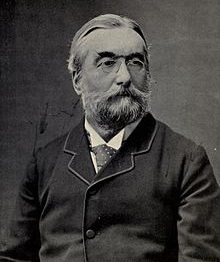
508.
Sir
Joseph Norman Lockyer (1836 - 1920)
was an English scientist and astronomer. Along with the French scientist Pierre
Janssen he is credited with discovering the gas helium. Lockyer also is
remembered for being the founder and first editor of the influential journal
Nature.
He declared:
The Vedas, in
fact, are the oldest books in which we can study the first beginnings of our
language and of everything which is embodied in all the languages under the
sun.
(source:
The Dawn of Astronomy - by N J Lockyer p.
432 Massachusetts: Institute of Technology).
 509.
Brannon aka
Vrndavan Parker
(1967- ) author of the book,
Orissa in the Crossfire
where he
has eloquently observed that the same war against the native people
and ancient traditions never ended. Let the people of the world recognize the
truth and demand an end to the ongoing Cultural Genocide of India's native
cultures:
509.
Brannon aka
Vrndavan Parker
(1967- ) author of the book,
Orissa in the Crossfire
where he
has eloquently observed that the same war against the native people
and ancient traditions never ended. Let the people of the world recognize the
truth and demand an end to the ongoing Cultural Genocide of India's native
cultures:
History
reveals that Hinduism and Buddhism were not inimical faiths that demanded
rejection of the other. Both these faiths were contemporary to one another and
are accurately described as alternate cultural accents of the same traditional
milieu. The concept of the two traditions being separate religions was a western
intervention. The very fact that Lord Buddha is recognized as the 9th
Avatar of Lord Vishnu, who is accepted as God himself by a majority of Hindus,
testifies to this. The Dashavatar or 10 avatars of Vishnu represent a crucial
and integral aspect of Hinduism. Unlike western religions, the total uprootment
and abandonment of one’s ancestral faith as an inimical force has never held a
prominent place within the Indic religious context.
Christian and Muslim conversion involves the
rejection and denial of ancestral faith. Similar changes within Indic context
are never so drastic and reflect the variations of choices within the Dharmic
family.
By constant disenfranchising the Hindus, distorting their words and denigrating
their efforts, the media is the primary cause of social chaos and political
mayhem. In America this same method was applied against the great American
Indian leaders of the 1800s who struggled to defend their culture, people and
lands. In every case without fail it was media which provided the sensational
gruesome tales of massacres of innocent white women and children at the hands
of the Red Savages’. Guns alone do not create genocide."
Today as the world is overwhelmed by constant crisis many are recognizing the
inherent wisdom of the ancient indigenous cultures. Hinduism, as a religion that
was practiced before the age of Pyramids or the construction of Stonehenge, is
an authentically indigenous tradition. It is one of the few remaining root
cultures in the world. These root cultures represent an ethos that does not put
a price tag on anything which lives inside each of us.
(source:
Orissa in the Cross fire:
Khandhamal burning
- By Brannon Parker
p. 7 and p. 284 -287).

Meerabai's
temple to Lord Krishna at Chittorgarh, Rajasthan.
A 16th-century Hindu mystic poet and devotee of Krishna.
She was
the daughter of King Ratansingh of Udaypur, and is celebrated as a poet and has
been claimed by the North Indian Hindu tradition of Bhakti saints.
She has written thousands of devotional poems in passionate praise
of Lord Krishna.
(image source: webmaster's
own collection of photos).
***
In an article on
The Forgotten Hindus of Vietnams Champa Kingdom,
he has written:
Hinduism continues to thrive in India, yet
today it is only among the Balinese and Cham Balamon people that this once
global expression of Hinduism survives unbroken. Vietnam, with its ancient and
impressive Hindu heritage, has age-old ties with India. The Cham Balamon people
continue to practice their venerable Hindu traditions and express a keen
interest in visiting India to see the holy sites and meet with other dedicated
Hindu activists.
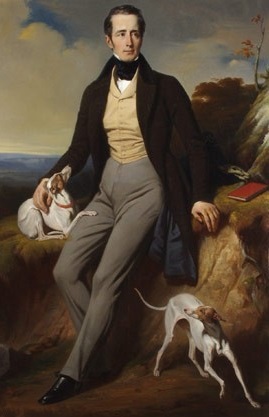 In India, Hindus have developed many
organizations and projects to preserve the traditions of their ancestors and to
empower their youth with the wisdom and time-tested methodologies of their
priceless heritage. The Cham Balamon are engaged in a similar struggle. Sharing
the Hindu heritage and ethos, holding the same dharmic outlook, the Vietnamese
Hindu community is confronted by the same challenges being faced in India.
In India, Hindus have developed many
organizations and projects to preserve the traditions of their ancestors and to
empower their youth with the wisdom and time-tested methodologies of their
priceless heritage. The Cham Balamon are engaged in a similar struggle. Sharing
the Hindu heritage and ethos, holding the same dharmic outlook, the Vietnamese
Hindu community is confronted by the same challenges being faced in India.
Today, as members of a global Hindu
community, we are becoming more and more empowered by the technologies of this
information age, which allow Hindus throughout the world to support each other
in common cause. Our culture is worth preserving and as Hindus, we know dharma
is not optional. Dharmic based Hindu civilization, wherever found, is a
testament to that which is best in humanity. As the 21st century dawns, the
Hindus of Bali, Vietnam and the world look to India as both the epicentre and
foundation of Hinduism. It is my hope that the Hindus of India and the world
will rise up to the occasion. Surely then will dharma prevail."
(source:
The Forgotten Hindus of Vietnams Champa Kingdom - By Brannon Parker -
indiafacts.org).
510. Alphonze
Marie Louis de Prat de Lamartine (1790 - 1869) chevalier
de Pratz, was a French writer, poet and politician who was instrumental in the
foundation of the Second Republic and the continuation of the Tricolore as the
flag of France. He wrote on
Hindu Philosophy:
It is the ocean, we are but its cloud...The key
to every thing is in India.
(source:
Lamartine,
Opinions sur Dieu, le bonheur et l'eternite d'apres les livres sacres de l'Inde,
Sand, Paris. 1984, p. ix.).
 511.
Dr. Hans-Peter Durr
(1929-2014), was a German
physicist. He was
born in Stuttgart
between 1978 and 1992 he was executive Director of the Max
Planck Institute for
Physics and Astrophysics in Munich for several times. He was Vice executive
director at the Max Planck
Institute for Physics (Werner-Heisenberg-Institute)
1972-1977, 1981,1986 and 1993-1995. Until 1997 he was professor of physics at
the Ludwig Maximilian
University, both in Munich, Germany.
511.
Dr. Hans-Peter Durr
(1929-2014), was a German
physicist. He was
born in Stuttgart
between 1978 and 1992 he was executive Director of the Max
Planck Institute for
Physics and Astrophysics in Munich for several times. He was Vice executive
director at the Max Planck
Institute for Physics (Werner-Heisenberg-Institute)
1972-1977, 1981,1986 and 1993-1995. Until 1997 he was professor of physics at
the Ludwig Maximilian
University, both in Munich, Germany.
He had remarked that:
I studied matter for the last 35 years, only to find out that it does not exist!
I have been studying something that does not exist.
He also was of the opinion that whenever he is giving a lecture on quantum
physics, he feels as if he is speaking on Vedanta.
The whole universe is made up of one substance. Ancient Rishis and modern
physicists both say the same thing.
(source: Secret
of the Sages - Artofliving.org).
 512. Sir Alfred Comyn Lyall
(1935-1911) Anglo Indian poet, historian and British civil servant. Verses written
in India on
Lord Shiva:
512. Sir Alfred Comyn Lyall
(1935-1911) Anglo Indian poet, historian and British civil servant. Verses written
in India on
Lord Shiva:
I AM
the God of the sensuous fire
That moulds all Nature in forms divine;
The symbols of death and of man's desire,
The springs of change in the world, are mine;
The organs of birth and the circlet of bones,
And the light loves carved on the temple stones
-
Shiva by Sir Alfred Comyn Lyall
(source:
Siva - By Sir Alfred Comyn Lyall).
513.
Trevor
Fishlok
is an author, broadcaster and foreign correspondent. He has worked on assignment
in more than seventy countries and was staff correspondent of The Times in India
and New York, and Moscow bureau chief for The Daily Telegraph. In his book,
India File
he has observed:
In
Sanskrit Jagganath means lord of the universe. It is one of the names of Krishna
in his incarnation as Vishnu, and one of the main reasons for his popularity is
that all castes are equal before him. The extraordinary spectacle of Puri is
merely one of many epic demonstrations of the strength of belief in India and as
aspect of its awesomeness.
Religion is a dominant forces in the country and its influence and symbolism
are embedded and pervasive. Taxi dashboards are often decorated with religious
images, and cars, and lorries and rickshaws are painted with swastikas, the most
ancient of Hindu religious symbols.
 Hinduism is indivisible and all embracing, so that the esoteric part is no more
significant than the material. It is a framework for dealing with natural and
supernatural, providing places for all manner of beliefs and superstitions. It
is a sponge, admitting far more than it prohibits, and sets little store by
dogma. The existence of an omnipotent force is recognized, but this god-alone is
by no means the central exclusive focus in a religion which admits millions of
gods and allows immense freedom of worship. The spiritual and superstitious can
be blended, permitting limited notions of heresy. You can shout at your god if
he or she displeases you, and withhold your offerings as long as your sulk
lasts.
Hinduism is indivisible and all embracing, so that the esoteric part is no more
significant than the material. It is a framework for dealing with natural and
supernatural, providing places for all manner of beliefs and superstitions. It
is a sponge, admitting far more than it prohibits, and sets little store by
dogma. The existence of an omnipotent force is recognized, but this god-alone is
by no means the central exclusive focus in a religion which admits millions of
gods and allows immense freedom of worship. The spiritual and superstitious can
be blended, permitting limited notions of heresy. You can shout at your god if
he or she displeases you, and withhold your offerings as long as your sulk
lasts.
It is a powerful idea, being a code for living, and is
linked with karma, the idea that present actions affect future existence, the
soul being eternal and going through a cycle of births, deaths and rebirths, so
that marriage, as the preliminary to birth, is pivotal.
Hinduism offers solace and hope, a belief that present troubles are the wages of
a former lifes sins, that the future may be mitigated by unselfish and
dedicated actions. And, if these actions are truly altruistic and not performed
for the satisfaction of ego or conscience, they may lead to a form of
liberation. This serene state may also be achieved through various pilgrimages,
worship and meditation.
(source:
India File - By Trevor Fishlok
p. 63 - 64).
514.
Sankrant Sanu
is an entrepreneur, author and yoga student and teacher based in
Seattle and Gurgaon.
He is a
graduate of IIT Kanpur and the University of Texas at Austin. He holds
six technology-related patents.
His writing has appeared in various publications in India, USA and UK. His
popular blog on Sulekha.com has garnered over 100,000 views. Some of his
writings were republished in the book Invading the Sacred published by Rupa
Publications. His critique of the article on Hinduism in Encarta led to its
replacement by a more balanced article by a different academic source. He is
also now a regular columnist for Entrepreneur India magazine.
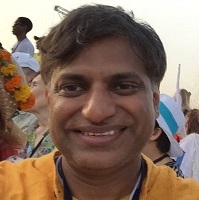 He
has ardently contented that on Yoga is indisputably a
Hindu practice thus:
He
has ardently contented that on Yoga is indisputably a
Hindu practice thus:
There has been some debate on the question of whether yoga is
Hindu and whether it is religious. Courts in California, hearing a lawsuit by
Christians, to Muslims clerics in Indonesia, have engaged themselves with this
question. The answer simply is this. Yoga is Hindu in origin, but it is not a
religion. It is a science of being. As in science, it can be practised by
anyone, the experiments replicated and the results verified. Yoga has Hindu
roots and has been sustained by Hindu (meaning here Indian, including
Buddhist, Jain, and later on Sikh) gurus down the ages. Yoga was developed and
elaborated by Hindu sages from the ancient Rishi Patanjali to Sri Krishna
elaborating on the yogas as paths to union in the seminal Hindu text the Bhagvad
Gita.In modern times, too, Hindu teachers brought this science to the West and
revitalised it in India. The names of T Krishnamacharya, an Iyengar Brahmin from
the Indian state of Tamil Nadu, is prominent in the modern revival of Hatha
Yoga. His illustrious disciples, most notably BKS Iyengar, T K V Desikachar and
Pattabhi Jois, helped spread it in the West. The other notable lineage comes
from Swami Sivananda Saraswati and his many disciples, including Swami
Vishnudevananda who established yoga ashrams worldwide in his gurus honour,
Swami Satyananda Saraswati who founded the seminal Bihar School of Yoga, and
Swami Satchidananda who became famous as the Woodstock guru.
While yoga is indisputably Hindu in its roots, it does not mean
that one needs to convert to being a Hindu to authentically practise it. This is
not how Indian wisdom traditions have worked. The aim of yoga is ultimately to
transcend all such identities, and thus it is not uncommon for gurus from India
to say, Yoga is not Hindu, anyone can practise it. This is true, just as it is
true for Science. There is no separate Christian science and Hindu science and
Muslim science. There is just physics. In that sense there is just yoga. The
enlightened masters themselves did not bind their teachings in identities. Nor
did they require any conversion. Yoga is not a belief system or a religion. It
is the science of transformation that can be practised by all. But in an age of
patents and intellectual property rights, it would be improper to deny that yoga
comes from the Hindu tradition. Yet, we see a trend in the West of taking the
fruits of yoga, the asanas, the kriyas, the meditation practices while at the
same time attempting to erase or even denigrate its Hindu roots. An example of
this is Christian yoga, that tries to appropriate yoga into Christianity while
removing the chanting of Om or other sacred syllables. While copying Hindu
practices, Christian missionaries dub Hinduism as Satanic. This is an example
of stealing the fruit of the tree while trying to chop its roots down.
Similarly millions of Americans practise yoga and participate in
other Hindu practices, leading
Newsweek to
famously proclaim
We
are all Hindus now.
At the same time, the academic study of Hinduism in the US shows considerable
prejudice, another example of cutting the
roots. This form of stealing will remain an obstacle for American yogis.
Thus the proper way of practice would be to acknowledge and honour
the Hindu roots of yoga and the Indian sages who brought this knowledge to
humanity and by their efforts have constantly renewed and propagated it for the
benefit of all.
Authentic learning and transmission of the knowledge is the way to pay the debt
to the rishis. Let us not dilute or distort it (for instance, by removing Om)
to fit it into some religious or secular concept.
(source:
Is yoga a 'Hindu' practice? - by Sankrant Sanu - rediff.com).
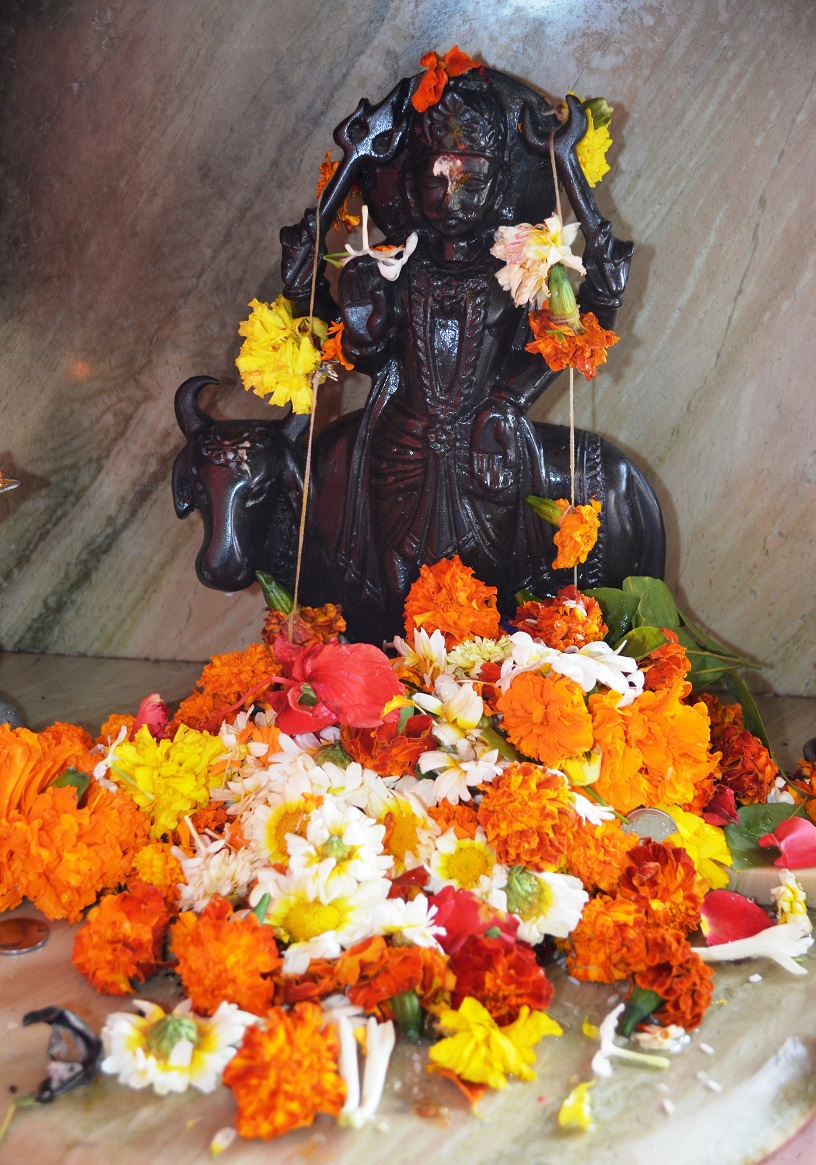
Lord Dattatreya
The beauty of this culture is
this, it means that you're supposed to be a natural seeker. It means you're
seeking truth.
(image source: webmaster's
own collection of photos).
***
 515.
John D Barrow (1952 - )
is an English cosmologist
theoretical physicist
and mathematician.
He is currently Research Professor of Mathematical Sciences at the University
of Cambridge.
515.
John D Barrow (1952 - )
is an English cosmologist
theoretical physicist
and mathematician.
He is currently Research Professor of Mathematical Sciences at the University
of Cambridge.
In his book,
Pi in the Sky: Counting, thinking and Being he has observed:
The Indian system
of counting has been the most successful intellectual innovation ever made on
our planet. It has spread and been adopted almost universally, far more
extensively, even than the letters of the Phoenician alphabet which we now
employ. It constitutes the nearest thing we have to a universal language,
(source:
Pi in the Sky: Counting, thinking and Being - by John D
Barrow p. 92).
516. Dr Alok Kumar
professor of Physics at the State University of New York at Oswego and author of
the new book, Sciences
of the Ancient Hindus has
observed:
What would you say about the people or culture who
gave us the place-value system of numerals, the numerical zero, the
trigonometric function sine and several trigonometric formulae, and set
standards for mass, length, and time? What about those who developed a
sophisticated system of medicine with its mind-body approach known as Ayurveda,
detailed anatomical and surgical knowledge of the human body, metallurgical
methods of extraction and purification of metals including the so called
Damascus blade, chemical techniques to transform compounds, knowledge of various
constellations and planetary motions that was good enough to assign motion to
the Earth in the fifth century A.D. and the science of self-improvement (Yoga)?
 The ancient Hindus used a complex calendar that used the sun and the moon in
defining the day, month and year. While days and months were defined by the
moon, the year was defined by the sun. Regarding the Earths motion, Aryabhatta
I suggested about one millennium before Copernicus a theory in which the Earth
was in axial rotation. All stars, but not planets, were at rest in this theory.
Aryabhata Is hypothesis of the Earths rotational motion is clearly explained
by the analogy of a boatman who observes objects on the shore moving backward.
The ancient Hindus used a complex calendar that used the sun and the moon in
defining the day, month and year. While days and months were defined by the
moon, the year was defined by the sun. Regarding the Earths motion, Aryabhatta
I suggested about one millennium before Copernicus a theory in which the Earth
was in axial rotation. All stars, but not planets, were at rest in this theory.
Aryabhata Is hypothesis of the Earths rotational motion is clearly explained
by the analogy of a boatman who observes objects on the shore moving backward.
Science was
institutionalized among the ancient Hindus. It was considered sacred and as good
as their moral codes for society. Scientific activities had important functions
that were valued in society. The role of astronomers to fix the calendar, to set
dates of religious festivals, and to predict eclipses or other astronomical
events became as important as their moral codes.
There is no scholarly tradition
in India to visit foreign lands for learning. On the contrary, India attracted
scholars from China, the Middle East, and even from the Mediterreanean. This is
in contrast to the Greek tradition in which many young Greek scholars undertook arduous journeys
to Egypt, Babylon, Persia, and even to India for learning.
(source: Sciences
of the Ancient Hindus - by Alok
Kumar
p. 12 - 13 and p. 24 -31).
517.
R Jagganathan is
Editorial Director, Swarajya.
He has worked on online
news website FirstPost.com
and Moneycontrol.com as
well as Forbes India. He has
previously written for or edited publications such as The
Financial Express,Business Standard, Daily
News & Analysis, and Bussinessworld.
His is popularly referred to as Jaggi
He has wisely stated on what Hindus need to develop in order to
survive Hinduphobia:
Hindus need to develop the intellectual arsenal to combat subtle Hindu-baiting
with sophisticated counters. There are two lessons for Hindus who do not want to
either join the fringe or become Hinduphobic themselves:
 First, they must study their adversaries and adopt tactics and strategy based
on local, national and global conditions for the spread of Indic ideas. If
Hinduism has to hold its own at home and expand abroad, it has to have at least
two products, a sophisticated version for the western markets, and a Hinduism Lite for India, where the social content is emphasised more than high
metaphysics. Second, they must master the language of sophistication and
modernity. Consider how the anti-Hindu lobby is dealing
with the rise of Sri Sri Ravishankar. They are attacking his World Cultural
Festival on the banks of the Yamuna by talking about environment damage.
First, they must study their adversaries and adopt tactics and strategy based
on local, national and global conditions for the spread of Indic ideas. If
Hinduism has to hold its own at home and expand abroad, it has to have at least
two products, a sophisticated version for the western markets, and a Hinduism Lite for India, where the social content is emphasised more than high
metaphysics. Second, they must master the language of sophistication and
modernity. Consider how the anti-Hindu lobby is dealing
with the rise of Sri Sri Ravishankar. They are attacking his World Cultural
Festival on the banks of the Yamuna by talking about environment damage.
..Sadly, in India, too, a supposedly Hindu
majority country. The unusual thing about India is that its innate pluralism
allows intemperate Hindu-baiters to be
labelled as progressives, and not as Hinduphobes. However, the problem
lies not with the Hinduphobes, but with Hindus themselves. There is a
fundamental reluctance to understand or accept where Hinduphobia comes from, and
to develop the intellectual arsenal to combat subtle Hindu-baiting with
sophisticated counters.
Over the past few centuries of interaction and conflict with
Islam, Christianity, racism and colonialism, Hindus often withdrew into a shell
and refused to understand the adversary - and where he is coming from. Octavio
Paz, the late Mexican Nobel laureate and ambassador to Delhi in the 1960s, wrote
in his book (In
Light of India) that Islam came to India fully formed and armed, and Hindus just could
not understand what it was about. Hindus and Muslims in India, despite centuries
of coexistence, merely stared at one another in incomprehension.
Hindus knew only the Indic way of religious conflict,
which was more about public disputation and ultimate coexistence, and not the
binary good-bad approach of the Abrahamic religions.
In Abrahamism,
acceptance of one god automatically negates the other. In Hinduism, worship of
Durga does not mean some people cant mourn Mahishasura. There is, of course, a
serious effort underway to make Hindus see this in binary terms, so that people
are set against one another.
(source:
Even While Calling Out Hinduphobia, Its Important To Develop A Hinduism Lite
by
R Jagannathan -
Swarajya.com).
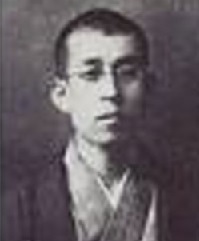 518.
Yoshio
Mikami (1875-1950) Japanese mathematician and wasan historian in his
book, The Development of Mathematics in China and Japan, observed of the Indian
influence on Chinese mathematics:
518.
Yoshio
Mikami (1875-1950) Japanese mathematician and wasan historian in his
book, The Development of Mathematics in China and Japan, observed of the Indian
influence on Chinese mathematics:
Things Indian exercised supremacy
in art and literature, in philosophy, in the mode of life and the thoughts of
the inhabitants, in everything. It is even said, astronomy and calendrical arts
had also felt their influence. How then could arithmetic remain unaffected? No
doubt the Chinese studied the arithmetical works of the Hindoos.
On the popularity of Indian
literature in China, Mikami wrote: we read in history, the Indian works were
read in translation ten times more than the native (Chinese) classics, a fact
that vividly tells how the Indian influence had swept over the country (China).
(source:
The Development of Mathematics in China and Japan - By
Yoshio Mikami
P 57).
 519.
Dr. Kapil Kapoor (1940
- )
is an Indian scholar of linguistics and literature and an authority on Indian
intellectual traditions.
He is former Pro-Vice-Chancellor of Jawaharlal
Nehru University (JNU)
and served as professor at the Centre for Linguistics and English, and
Concurrent Professor at the Centre for Sanskrit Studies there before retiring in
2005.He
is Editor-in-Chief of the 11-Volume Encyclopedia
of Hinduism published
by Rupa & Co. in
2012.
519.
Dr. Kapil Kapoor (1940
- )
is an Indian scholar of linguistics and literature and an authority on Indian
intellectual traditions.
He is former Pro-Vice-Chancellor of Jawaharlal
Nehru University (JNU)
and served as professor at the Centre for Linguistics and English, and
Concurrent Professor at the Centre for Sanskrit Studies there before retiring in
2005.He
is Editor-in-Chief of the 11-Volume Encyclopedia
of Hinduism published
by Rupa & Co. in
2012.
Hinduism has no sacred text. It is a kind of manual for living based on ethical
materialism. It is also deeply and widely interpretative.
But keeping this make what you will of it nature of Hinduism in mind, I ask
him whether this encyclopedia, an interpretation of interpretations, is not
going to open to criticisms both from those who have a very firm view of
Hinduism in mind and from those who see it as an exclusionary communal
enterprise? Even most Brahmin scholars dont know about most of the matters
that they pass off as Hindu. Like nuclear science, Hinduism is essentially a
system of knowledge and this encyclopedia attempts to explain various elements
for both the scholar as well as the student of ideas, says Kapoor.
(source:
Hinduism
is an intellectual system, not religion - by Indrajit Hazra
Hindustan Times - January 13, 2012).
 520.
Hindol Sengupta is an Indian journalist and
entrepreneur, who is the author of six books. One of Hinduisms greatest
achievement is the recognition that our way is not the only way. This
lack of theological arrogance must be the bedrock of any modern thinking
about the place of God in our lives. The Vedanta philosophy is perfectly impersonal said Vivekananda.
It does not build itself around one man. Yet, it has nothing to say
against philosophies that do; there is no fight and no antagonism. We
have no theory of evil. We call it ignorance said Vivekanada.
520.
Hindol Sengupta is an Indian journalist and
entrepreneur, who is the author of six books. One of Hinduisms greatest
achievement is the recognition that our way is not the only way. This
lack of theological arrogance must be the bedrock of any modern thinking
about the place of God in our lives. The Vedanta philosophy is perfectly impersonal said Vivekananda.
It does not build itself around one man. Yet, it has nothing to say
against philosophies that do; there is no fight and no antagonism. We
have no theory of evil. We call it ignorance said Vivekanada.
This non-judgmental,
non-discriminating approach is also impossibly important in an age where
we are less sure than ever about ourselves, about where we could fin
love (if at all) and how we could, possibly, be happy. There is no moral
code of the universe, says Hinduism, the sanatan dharma, by which the
entire universe lives and works, and it is the choice of man either to
learn, appreciate and play by it or not. Finally there is no sin at
birth, only a choice of action, the application of karma. The entire
cycle of action and consequences is in the hands of man. The law of
sanatan dharma works not just for Hindus but for every living element in
the universe. The universe itself, says Hinduism, has always worked on
sanatan dharma or the harmonious code of balance that keeps everything
functioning and always will. It is up to man to traverse that journey.
In a sense then, Hindu philosophy tries to push you into realizing that
you can attain any and every physiological and psychological depth
through any manner or form that you choose. What determines your success
and spiritual elevation is your determination, your devotion to your
chosen path. It chooses neither to tell you how to live or worship, nor
suggests that any path that you take would necessarily be good or bad.
It asks only that you be self-aware and responsible for your actions. In
your actions, it suggests, lies your liberation.
(source:
Being Hindu - By Hindol Sengupta
p. 60 - 61).
521.
Raja
Rao (1908 2000)
into an old
Brahmana family whose spiritual lineage dates back to the 13th century. The
family home was built next to a temple and Dharmashala, both built by distant
relatives. A life-time wanderer, Raja loved to tell the story of being born in
room number one of his familys pilgrim inn. He was
one of Indias most illustrious English language writer and
during
his life, Raja shared the wisdom of India with thousands of people around the
world, as a teacher and author.
Raja had to learn Sanskrit against his wishes, but this opposition intensified
his search for Indian values. Emerging from the classical Indian background of
his grandfather, Raja began his philosophical, spiritual quest. Though, he would
study many world religions, philosophies and cultures, he always knew Advaita
Vedanta was the ultimate path.
The following are the words of Raja Rao on
Vedanta:
There
is no India without the Vedas as theres no India without the Ganges or the
Himalayas.
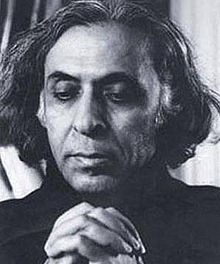 And whats the secret of the Vedas: its Vedanta, the end of the Vedas, or if
you will, the end of knowledge (for Veda comes from the root vid:
to know). So, it would be truer to say, theres no India without Vedanta.
And whats the secret of the Vedas: its Vedanta, the end of the Vedas, or if
you will, the end of knowledge (for Veda comes from the root vid:
to know). So, it would be truer to say, theres no India without Vedanta.
What is mans estate? Is it to love the rivers and the forests, to glorify the
world and the spenders of his making, or is it to know, to realize the estate of
his state? Where is he from and where does he go? Koham Kutham? asked Sri
Sankara. And what is it that I see? Unless I know whence I came, would I know
what I am? And if I know what I am, would I see the world as I saw it before I
knew the background, the background of my instruments of perception? Ultimately,
what is it I see, comes back to who sees.
If you can decide this, we have resolved, according to India, every problem of
philosophy.
Being excludes nothing, becoming choses, for evolution predicates choice. In
daring the Truth, India became fearless again. In knowing it she saw herself.
The Vedas became contemporary and Vedanta actual. The great sage showed the rose
as rose and India became free not politically, but metaphysically. Thus going
back, as it were, to the source of the Ganges, she discovered the nature of
water. ‘Water is not stagnant water. Water is not flowing water. Water is just
water.
Again, in the words of Raja Rao on the Guru:
Thus, I had connected myself with the great Indian tradition, started as it were
with the Vedas, from an unknown age. At
the apex of Indian civilization is the Guru. There was always the Guru.
Everything in Indian civilization, whether it is for music or metaphysics,
grammar, or yoga, or archery, you always go to a Guru.
All this shows to you that wisdom does not belong to any one nation, as
sometimes we Indians in ignorance seem to boast of, as if we had the monopoly of
it but that wisdom is without Kaladasa, without time or space, and to me,
India is anywhere there is neither time nor space. Much as I love the Ganges,
and the Himalayas, where I shall be going tomorrow, that snowy home of our
Sages, the founding fathers, so to say of this land, yet must we never forget,
the Truth belongs to no one, and he who has even a small inkling of it must
realize that it shines in every human heart indeed, it shines wheresoever we
look, for Truth is itself light, the light in any perception. So you could say
ladies and gentlemen, if you will, India
is perception or in the triputi of seer, seeing, and seen, seeing alone is
India. In that sense, every human being is an Indian.
(source:
Meaning of India in Words of Raja Rao: Brief Life Sketch of a Novelist as
Sadhaka - by Susan Raja Rao - indiafact.org).
 522.
Suman K Chiplunkar,
author of Mudras and Health Perspective: An Indian
approach has remarked:
522.
Suman K Chiplunkar,
author of Mudras and Health Perspective: An Indian
approach has remarked:
From time immemorial India has been a country rich not only in natural
resources but also in learning and scholarship. Lord Krishna in Bhagavad Gita
says there is nothing as sacred as knowledge. The Rishis and yogis engaged
themselves in the pursuit of knowledge and studied the universe. Inspired by
nature and its wonders, they created the Vedas and Upanishads. They also delved
deep into the inner nature of man and came about the stunning knowledge of
Ayurveda, Yoga, Mudras and many other sciences.
Through scriptures it has been given to understand that Rishis and Yogis lived
hundreds of years, nay, thousands of years. People wondered at such scriptural
statements. But now when we come across the practical knowledge of Ayurveda,
Yoga and Mudras we feel confident that the dream of realizing long and healthy
life is possible.
Like Yoga, Mudra is one of the greatest and finest gifts of India to the world.
The Science of Mudras, a part of Yoga, is based on the fundamental principles of
life, namely, the five elements akash, vayu, agni, jal and prithvi; the five
pranas Prana Udana Samana Apana and Vyana; and the three doshas Vata,
Kapha, Pitta.
(source:
Mudras and Health
Perspective: An Indian approach
- By Suman K Chiplunkar p.
15).
 523.
Sanjeev Sanyal
author of the book,
Land of the Seven Rivers,
arguing that Hinduism is unique because while it sees 'The Truth' as
absolute and immutable but simultaneously acknowledges that there could be an
infinite number of variations and permutations and combinations to approach that
Truth.
523.
Sanjeev Sanyal
author of the book,
Land of the Seven Rivers,
arguing that Hinduism is unique because while it sees 'The Truth' as
absolute and immutable but simultaneously acknowledges that there could be an
infinite number of variations and permutations and combinations to approach that
Truth.
Hinduisms resilience and formidable intellectual prowess comes from this open
source nature of its architecture.
Hinduism is unique because while it sees ‘The Truth’ as absolute and immutable
but simultaneously acknowledges that there could be an infinite number of
variations and permutations and combinations to approach that Truth. So
Hinduism, says Sanjeev, is like an operating system which provides the basic
framework to structure the search and different thinkers, sages, monks,
philosophers have built apps on top of that architecture, on top of that
operating system, building thoughts and ideas that assist people on the faith to
knowing the Truth.
In a sense, I argue, Hinduism is an open source faith allowing many ideas to
flow in and provides nuances and directions of thought that assimilate and
accommodate constantly and consistently.
In this sense, everyone from Ramakrishna Paramhansa to Vivekananda to Osho to
Ramana Maharishi was an app builder who influenced and built within and on top
of the open source architecture of Hinduism.
(source:
Calling Hinduism A Way Of Life Is Meaningless:
Sanjeev Sanyal By Hindol Sengupta).

Durga Goddess: Fierce can be beautiful.
Durga,
wife of Shiva personifying Shakti or divine energy. Hindu
society has never seen women as weak.
***
524.
Sadguru Jaggi Vasudev, Hindu Yogi, author
and mystic. Founder of Isha foundation and offers Yoga programs around the
world. He has expressed his ideas on Hinduism thus:
A Hindu
is free to question the existence of God.
The beauty of this culture is this, says Sadhguru. It means that you're supposed to be a natural seeker. It means you're
seeking truth. Though all the religious texts have said (the truth), the
individual has the right to seek. We need not accept anything anyone has said.
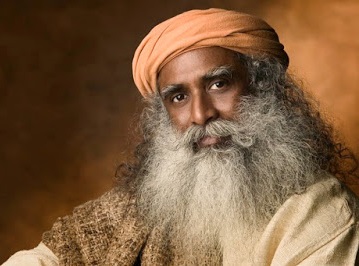 While we can and should respect everyone's
beliefs, no one has the right to impose them on each other. Ultimately, we
all need to be seekers and this holds true for every religion.
Hindu means that there is just one
goal in ones life, which is Mukti, meaning liberation. Thus, the only aim that
any Hindu has is ultimate liberation. For a Hindu, his career, business, family,
and friends are all like secondary things. They are just but stepping stones to
ultimate liberation. Hence, everything else is secondary, and relationships are
not significant. For a Hindu, the one and only thing about life is liberation.
For him, even God can be used as another
stepping stone for attaining ultimate liberation. However, no one else sees it
in this angle.
While we can and should respect everyone's
beliefs, no one has the right to impose them on each other. Ultimately, we
all need to be seekers and this holds true for every religion.
Hindu means that there is just one
goal in ones life, which is Mukti, meaning liberation. Thus, the only aim that
any Hindu has is ultimate liberation. For a Hindu, his career, business, family,
and friends are all like secondary things. They are just but stepping stones to
ultimate liberation. Hence, everything else is secondary, and relationships are
not significant. For a Hindu, the one and only thing about life is liberation.
For him, even God can be used as another
stepping stone for attaining ultimate liberation. However, no one else sees it
in this angle.
God, in almost all religions, is the eventual
goal. However, Hinduism is like a culture that does not view God as an ultimate
goal. Hindus understand that they created him and can create whichever number
they desire. Any kind they want. Hindus have learnt the science and art of
creation such that they can transform a rock to be divine.
(source:
Hinduism Explained - by Sadhguru Jaggi Vasudev).
Famines were quite normal in almost every culture, in every society. In this
culture, when famines came, the simple rural wisdom was that if you have a cow
in your house, your children will live. If you do not have a cow in your house,
your children will die, it was as simple as that. So the cow naturally became
like a mother, it is like a surrogate mother to us. When our mothers breast
could not feed us anymore, and the next level of food did not come to us, the
cow was like a mother for everybody. All of us at some point have sustained and
nourished ourselves on cows milk, is it not? It became very sacred because it
is a life nourisher and what should have gone to its own offspring, it allows
us. We believe such things, but whether it allows or not we take it. Because it
nourishes us in that way, it is like the number two mother in our life. So in
this culture some sanctity was given to the cow. Another reason is that the cow
has very human kind of emotions. The cow is one animal which responds to your
own grief and sorrow. Suppose you are very miserable, the cow feels this and
sheds tears for your pain. That is the reason why in India it was said you
should not kill a cow because its emotions are close to that of a human being.
(source:
Cow The Life Nourisher - isha.sadguru.org).
525.
Kashyap Vasavada
born in India,M.S.
(Physics) Delhi Univ. (India) Ph.D. (Physics) Univ. of Maryland, College
Park, MD. Research Associate NASA.
Emeritus Professor Department of Physics Indiana University Purdue
University Indianapolis Indianapolis. He has written at length on
Hinduism and its lack of conflict with science:
Eastern religions (in particular Hinduism and Buddhism) do not have any
problem with science whatsoever. In the following I will try to explain
this assertion. In fact you would have hard time finding a single Indian
(or someone from many other Asian countries) who believes in young Earth
creationism or is against Big Bang theory or theory of evolution.
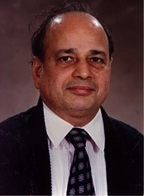 I will start with the concept of God in Hinduism. In some sense,
Hinduism is the most misunderstood religion in the West, starting with
its name! The real name is Sanatana Dharma meaning universal duty,
responsibility or a prescribed way. The word Hindu was coined probably
by Persians thousands of years back. They called people living near the
river Sindhu (Indus) as Hindus! Unfortunately the word Hinduism is stuck
like God particle for Higgs boson! So I will have to use it. The main
scriptures are called Vedas, Upanishads and Bhagvad Gita. The
religion did not originate from one prophet, but a number of sages
contributed to the Vedic vision portrayed in the scriptures. Founding
fathers of quantum theory like Schrodinger, Heisenberg and Bohr were
familiar with these scriptures. These scriptures talk about (in
Sanskrit) a formless, shapeless, omnipresent, omniscient God as Brahman.
It is a universal, ultimate, super consciousness. It is supposed to be
present in every particle of the universe. Thus the Hindu concept is:
God is not like a king emperor who created the universe and rules
arbitrarily from outside but it is an all pervading eternal entity.
I will start with the concept of God in Hinduism. In some sense,
Hinduism is the most misunderstood religion in the West, starting with
its name! The real name is Sanatana Dharma meaning universal duty,
responsibility or a prescribed way. The word Hindu was coined probably
by Persians thousands of years back. They called people living near the
river Sindhu (Indus) as Hindus! Unfortunately the word Hinduism is stuck
like God particle for Higgs boson! So I will have to use it. The main
scriptures are called Vedas, Upanishads and Bhagvad Gita. The
religion did not originate from one prophet, but a number of sages
contributed to the Vedic vision portrayed in the scriptures. Founding
fathers of quantum theory like Schrodinger, Heisenberg and Bohr were
familiar with these scriptures. These scriptures talk about (in
Sanskrit) a formless, shapeless, omnipresent, omniscient God as Brahman.
It is a universal, ultimate, super consciousness. It is supposed to be
present in every particle of the universe. Thus the Hindu concept is:
God is not like a king emperor who created the universe and rules
arbitrarily from outside but it is an all pervading eternal entity.
There is a beautiful interesting illustration in Vedas which Schrodinger
mentions in his book on what is life. The question is why
consciousness looks similar when our bodies look different. The answer
in Vedas is that the source of consciousness is outside. We are merely
reflecting it as multiple mirrors would reflect a single object!
Now let us consider two main issues in which some Westerners see
conflict with science: age of Universe and theory of evolution. On both
of these issues, the Hindu sages got approximately correct ideas in
agreement with science. Just by thought processes they realized that
universe must be billions of years old, as noted by Carl Sagan in his
book on cosmos. The other realization was that there must be some
connection between animals and human beings. If human beings have souls,
then animals too have souls. That gave rise to mythological stories that
God came to Earth in the form of first sea animals, then land animals
and then human beings. These are ten Avatars of god Vishnu.
How about origin of universe? Of course one cannot say that the ancient
sages knowledge was anywhere comparable to the current knowledge. But
just see the astonishing description of origin from a scripture known as Vayupuran:
In the beginning, there was nothing in the universe. The Brahman (the
divine essence) alone was everywhere. The Brahman had neither color nor
scent; it could not be felt or touched. It had no origin, no beginning
or no end. The Brahman was constant and it was the origin of everything
that was destined to be in the universe and the universe was shrouded in
darkness.
Interesting! It was dark because visible light was not created yet!! In
all Hindu scriptures, multiverse and cycles of creation and destruction
of universe lasting billions and trillions of years are frequently
mentioned.
Another excerpt from Vedas:
The universe is brought about by the collapse of fullness in the
transcendental field in which reside all the laws of nature responsible
for the creation of the entire manifest universe. How is the
transcendental level functioning? It is functioning from its unbounded
nature to point to itself. He who does not know that initial pure
consciousness state, ultimate reality, what can the laws of nature
accomplish for him? He who knows it, remains established in evenness,
unity, wholeness of life.
Since Brahman was by itself, it is clear that it interacted with itself
i.e. self-referral (like inflaton!!!) and eventually manifested in every
particle of the universe. It is a very interesting parallel with modern
cosmology. Strictly speaking the word manifestation rather than creation is used in Vedic cosmology with a subtle meaning.
(source:
Hinduism for physicists - by
Kashyap Vasavada).


Page < 1 2 3 4 5 6 7 8 9 10 11 12 13 14 15 16 17 18 19 20 21 22 23 24 >